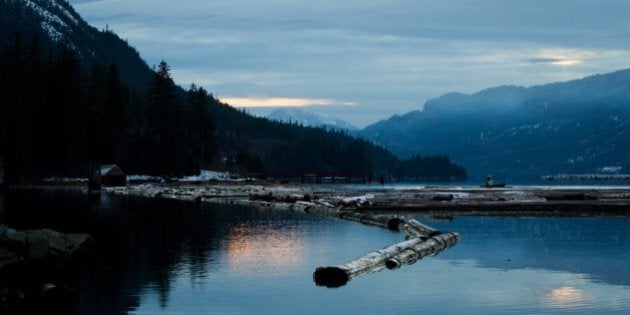
Tar sands oil may soon be pumping through an Ontario pipeline near you. If you didn't know, it is likely because Enbridge doesn't want you to know that they are bringing the Kalamazoo disaster to your home province. It is called Line 9, and is part of the same Enbridge pipeline network as the pipe that spilled well over a million barrels of oil in 2010 into the Kalamazoo River. The U.S. National Transportation and Safety Board investigated Enbridge's handling of the spill, citing two dozen safety violations.
The investigation showed that Enbridge knew that the 40 year old pipeline could use some work on numerous cracks and corroded areas to make it safer and less likely to fracture, yet there were no attempts to fix the pipeline. They also underestimated their "worst case scenario" by claiming that a spill would be noticed and shut down after eight minutes. When a spill actually happened, we saw that it took the large, wealthy pipeline company over 15 hours to react.
The pipeline that fractured in Kalamazoo connects to Line 9 when it passes through the Windsor-Quebec City corridor, the most densely populated area in Canada. But communities along this pipeline are not being informed or asked if they are okay with it. In fact, the National Energy Board will be making a decision on phase one of the project, which is to bring a corrosive tar sands-chemical mixture known as dilbit from Sarnia to a refinery outside of Hamilton, no later than August 20th.
Dilbit is more corrosive than conventional crude given the temperatures needed for transport and its acidic nature, and a joint fact sheet put out by several environmental groups describes the flow through a pipeline as "fast, hot, and toxic liquid sandpaper." But again, most people do not know about it, and grassroots and environmental groups have taken on the responsibility of informing neighbours and those at risk.
And whether or not you are directly on the route of the pipeline, a fracture could still impact you since it crosses major rivers and water systems. A spill could devastate the Grand River Basin, Lake Ontario, and the St. Lawrence River -- just to name a few. If you are served by one of these large water sources, you may expect cancer-causing toxins to enter with a spill, potentially evacuation of your home, and several years of cleanup without full restoration to pre-spill conditions.
It is going largely unnoticed that Enbridge's failure in Kalamazoo may very well be repeated just across the border. Water, land, air, and ecosystems know no borders. Unfortunately, neither do human error, corporate irresponsibility, lack of government environmental regulation and proper consultation with communities opposing these projects. People are piping up and opposition is growing in many communities near Line 9's right-of-way including Six Nations, Aamjiwnaang, Sarnia, Hamilton, London, Guelph, Kitchener-Waterloo, Toronto, Montreal, Dunham, and others.
And why wouldn't these communities be piping up? They will be facing all the risks, with little (if any) consultation, while Enbridge profits. When there is a spill, these communities will have to face the consequences and Enbridge may (or may not) get a slap on the wrist. For the Kalamazoo spill, the company was fined a measly $3.22 per gallon of oil spilled. We pay the true costs to our health and our communities.
We may even be forced to pay for it out of our wallets. Enbridge carries only enough insurance to cover $575 million in damages, well below the costs of clean-up for the Kalamazoo spill. Who pays for the rest? In the age of austerity when there are rallies across the country against rising tuition fees and Harper's cuts to health care, we are similarly seeing $1.4 billion dollars in subsidies going to the oil and gas sector and industry executives getting large pay raises -- including Enbridge's CEO and 12 directors.
Alternatively, some of us may like to see this money, particularly the subsidies, going to cutting our addiction to fossil fuels through investing in public transit and building retrofits. With more affordable public transit, there could be more transit routes and the capacity to operate for longer hours. This means not only less cars, but also that those employed in shift work and out of the regular nine-to-five would be able to get to work more easily. This is a clear shift towards healthier cities and respecting all types of work that allow our cities and communities to function -- not just focussing on the jobs in northern Alberta and temporary jobs for pipeline construction.
Governments can continue to talk about deficits and budget cuts, but while they wonder where their money is going, our communities face the risk of corporate mismanagement. So where is the contingency budget for taking the cancer out of our water, the asthma out of our air? It doesn't cost that much to respect people's right to say "no" does it?